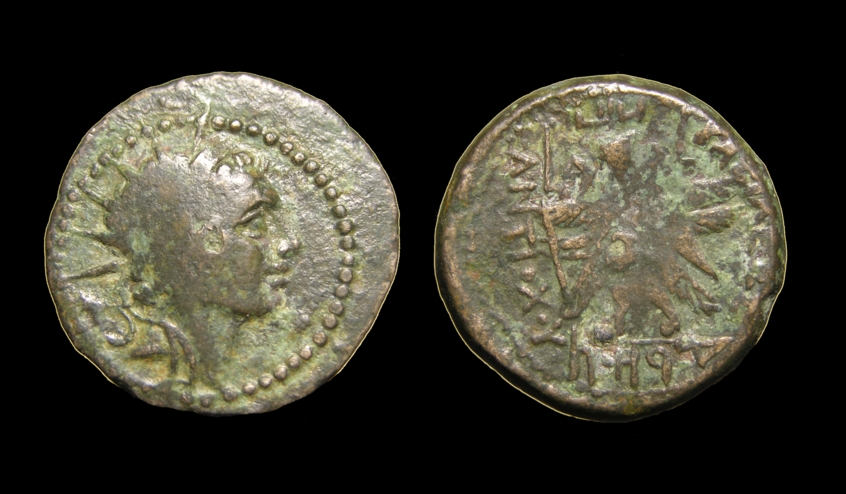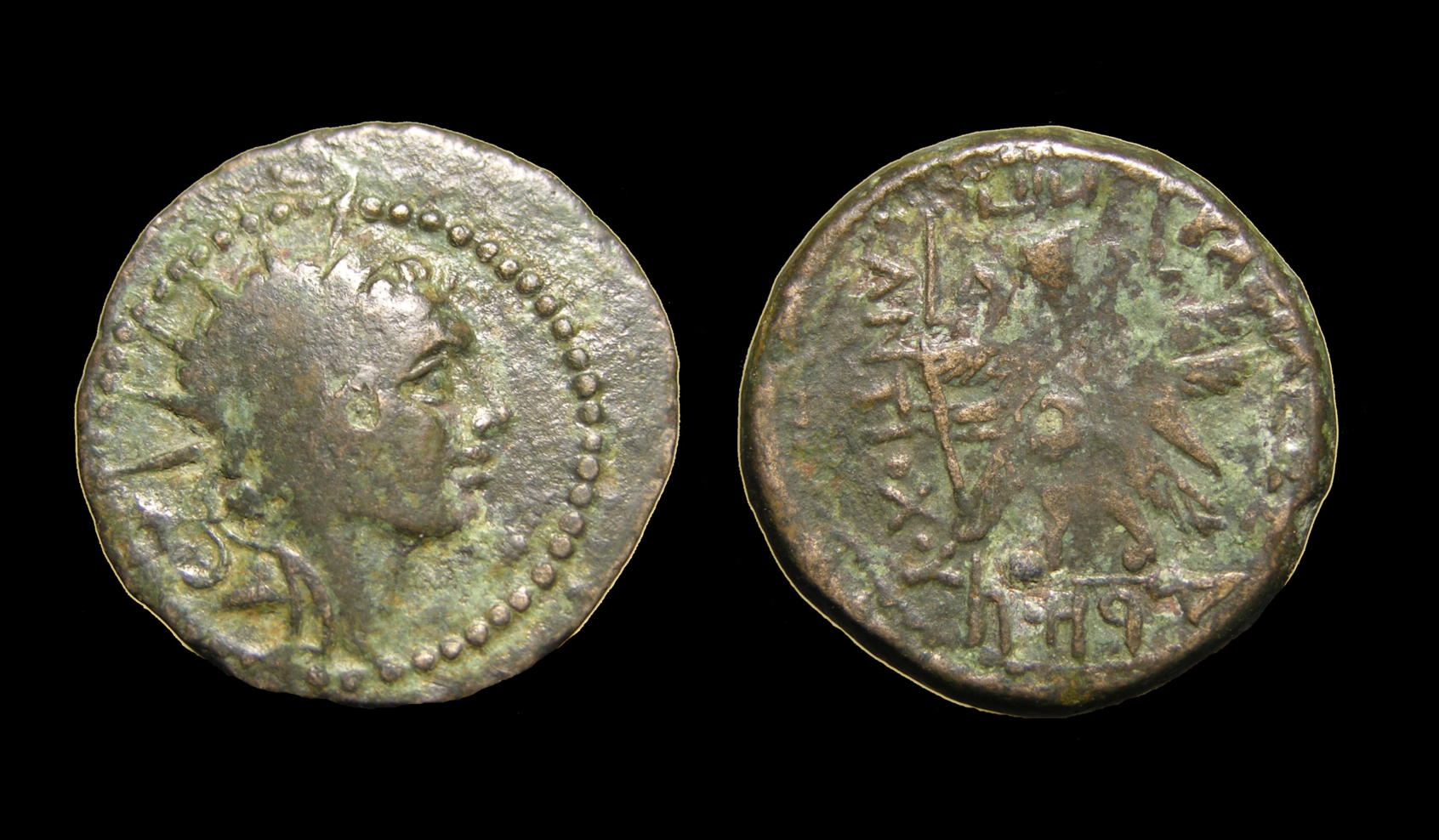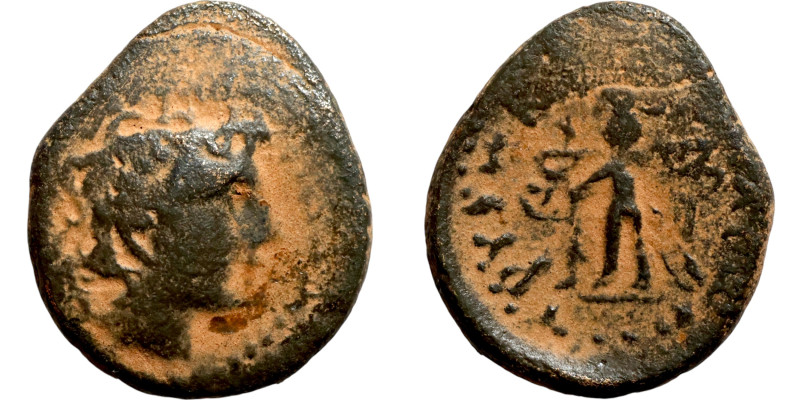 Hover to enlarge
Hover to enlarge

Antiochus IV
Mint: Byblus
168 to 164 BC
Obvs: Antiochus radiate and diademed right, dotted border.
Revs: BAΣIΛEΩΣ ANTIOXOY, Phoenician script "of Gebal" on left, "the holy" in exergue. Six-winged Kronos-El standing left holding was-sceptre, dotted border.
AE 21mm, 6.01g
$0.00
Order # G 283
Ref: SC 1444.1; HGC 9, 663(R2)
NFS
 Hover to enlarge
Hover to enlarge
